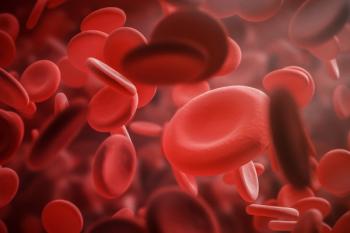
R.Ph.s called crucial to reducing infections
Nearly two million people a year contract an infection during a hospital stay, according to the Centers for Disease Control & Prevention, often attributable to antimicrobial-resistant organisms. "Health-system pharmacists are instrumental in reducing that rate, through passive and active interventions," said Steve Ebert, Pharm.D., president of the 400-member Society of Infectious Diseases Pharmacists.
Nearly two million people a year contract an infection during a hospital stay, according to the Centers for Disease Control & Prevention, often attributable to antimicrobial-resistant organisms. "Health-system pharmacists are instrumental in reducing that rate, through passive and active interventions," said Steve Ebert, Pharm.D., president of the 400-member Society of Infectious Diseases Pharmacists.
Pharmacists write guidelines that assist physicians in the appropriate use of specific antibiotics, an example of what Ebert calls passive intervention. But that's one component of a much larger role: They also actively review and assess prescribing patterns on a daily basis, sometimes saving lives and often reducing costs through antibiotic substitutions.
"Pharmacists are increasingly comfortable making antibiotic substitutions," said Ebert. "Sometimes switching a patient from a broad-spectrum to a narrow-spectrum drug, sometimes to an equally effective but less expensive drug, and sometimes to a drug that is simply more appropriate and effective. Physicians are increasingly comfortable with recognizing that pharmacists may have more knowledge about the availability and applicability of [antibiotic] substitutions."
Although the rate of HAIs specifically attributable to the problem of antimicrobial resistance is unknown, the Institute of Medicine estimates that the annual overall cost of antimicrobial resistance is between $4 million and $5 million a year. Extensive HAI antimicrobial resistance surveillance is being conducted by researchers at Emory University and CDC's National Center for Infectious Diseases. Named Project ICARE (Intensive Care Antimicrobial Resistance Epidemiology), the multiphase initiative is ongoing. Its data suggest that antimicrobial resistance-related HAIs are increasing.
According to Project ICARE researchers and CDC, as much as half of all antimicrobial use, including utilization in institutional settings to combat surgical infections, is inappropriate. That's particularly sobering in light of the fact that 25 million pounds of antibiotics are produced every year in the United States and antibiotics are administered to 30% to 50% of all hospitalized patients.
The federal Interagency Task Force for Antimicrobial Resistance defines appropriate antimicrobial drug use as "use that maximizes therapeutic impact while minimizing toxicity and the development of resistance. In practice, this involves prescribing antimicrobial therapy only when it is beneficial to the patient, targeting therapy to the desired pathogens, and using the appropriate drug, dose, and duration. Appropriate antimicrobial drug use should not be interpreted simply as reduced use, because these drugs offer valuable benefits when used properly. It is overuse and misuse that must be decreased to reduce the selective pressure favoring the spread of resistance."
That definition requires diligence on the part of pharmacists, said Ebert. The role of pharmacists in antimicrobial stewardship is increasingly apparent and more vital, he said. About 500 pharmacists are specialists in infectious disease control, a professional role that physicians and hospital administrators are increasingly willing to accept.
Shifting attitudes "In the early 1980s, I attended national conferences on infectious diseases that resulted in shouting matches between doctors insisting that pharmacists had little or no role to play in infection control and pharmacists who said they did," said Ebert. "That environment has changed significantly. The things identified by pharmacists for years as important parts of their job in helping control cost and providing quality are now part of the mainstream of health-system care. That includes issues related to antimicrobial resistance."
One recent development points to that shift in attitude: In June 2004, the Infectious Diseases Society of America and the CDC-sponsored National Surgical Infection Prevention Project (now the Surgical Care Improvement Project) published guidelines outlining the steps health systems should take to reduce HAIs associated with surgery. In part, the guidelines call for the proper selection of prophylactic antibiotics, the certainty that those drugs are administered within an hour of incision, and that the drugs are stopped no later than 24 hours after surgery is completed-all issues that are enhanced by active pharmacist oversight. The guidelines also call for pharmacists to participate in passive interventions such as formulary design.
Newsletter
Pharmacy practice is always changing. Stay ahead of the curve with the Drug Topics newsletter and get the latest drug information, industry trends, and patient care tips.















































































































